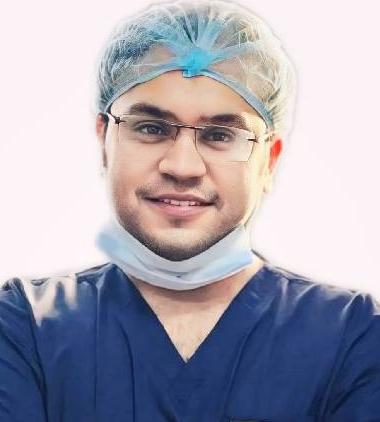What is Stereotactic Radiosurgery? - Procedure and Purpose

Treatment Duration
1 Hours
------ To ------4 Hours
Treatment Cost
₹ 1,00,000
------ To ------₹ 3,50,000

Table of Contents
- What is Stereotactic Radiosurgery?
- Conditions treated with Stereotactic Radiosurgery
- Who needs Stereotactic Radiosurgery?
- How is Stereotactic Radiosurgery performed?
- What to expect before and on the day of Stereotactic Radiosurgery
- What to expect after Stereotactic Radiosurgery?
- Benefits of Stereotactic Radiosurgery
- Risks and complications of Stereotactic Radiosurgery
- Risks of delayed Stereotactic Radiosurgery
- Cost of Stereotactic Radiosurgery
Stereotactic Radiosurgery is a treatment method that uses radiation therapy to treat different conditions in the neck, brain, lungs, spine, and other parts of the body, including cancer, epilepsy, arteriovenous malformation, and trigeminal neuralgia. It uses a precisely focused beam of therapeutic radiation on a small area of the body.
Stereotactic radiosurgery is a non-surgical treatment method as there is no incision required. The procedure usually takes about 1 to 4 hours to complete. Generally, the recovery after the surgery is quick and effortless.
| Surgery Name | Stereotactic Radiosurgery |
| Diseases Treated | Cancer, Epilepsy, Arteriovenous malformation, Trigeminal neuralgia |
| Benefits of the Surgery | No incision |
| Treated by | Radiologist |
You can check Stereotactic Radiosurgery Cost here.
What is Stereotactic Radiosurgery?
Stereotactic Radiosurgery is a treatment method that uses radiation therapy to treat different conditions in the neck, brain, lungs, spine, and other parts of the body, including cancer, epilepsy, arteriovenous malformation, and trigeminal neuralgia. It uses a precisely focused beam of therapeutic radiation on a small area of the body.
Expert Doctors (10)
NABH Accredited Hospitals (10)


Conditions treated with Stereotactic Radiosurgery
It is done to treat the following medical conditions:
- Brain Tumour: Stereotactic radiosurgery is the most commonly used method to treat non-cancerous and cancerous brain tumours. These tumour conditions may include paraganglioma, meningioma, and hemangioblastoma.
- Trigeminal Neuralgia: It is a chronic disorder that causes pain. It is generally caused either in one or both of the trigeminal nerves (responsible for sending pain, temperature, and touch sensation from the forehead, cheek, and lower jaw to the brain).
- Arteriovenous Malformation (AVM): Arteriovenous malformation is a condition in which the arteries and veins of the brain get tangled. In this condition, blood flow is directed from the arteries to the veins. As a result, the small blood vessels known as capillaries are bypassed.
- Acoustic Neuroma: It is non-cancerous and may disturb the hearing ability of the person. It can affect the region of the inner ear to the brain. Because of the presence of the tumour, the pressure is increased on the nerves.
- Other conditions: The other conditions that require treatment through stereotactic radiosurgery are tremors, epilepsy, Parkinson's disease, pituitary tumours, and cancer of lung, liver, breast, kidney, prostate, and spine.
Who needs Stereotactic Radiosurgery?
Patients who are diagnosed with brain tumor, Trigeminal Neuralgia, Arteriovenous Malformation (AVM), Acoustic Neuroma, or other medical conditions such as epilepsy, Parkinson's disease, pituitary tumours, and cancer of lung, liver, breast, kidney, prostate, and spine needs this procedure.
How is Stereotactic Radiosurgery performed?
Stereotactic radiosurgery is performed for brain tumour or lesions in the following steps:
- The radiologist will ask you to lie on the table that slides in the Gamma Knife machine.
- An intravenous tube is inserted into the vein that provides fluid, nutrition, and medicines during and after the procedure.
- The radiation is directed to the tumour or lesion.
- During the procedure, you will not feel any radiation as the machine does not make any such sounds.
- The time for completing the procedure ranges from one hour to four hours depending upon shape and size of tumour or lesion.
- In some cases, the doctor may advise you to stay at the hospital for one day.
What to expect before and on the day of Stereotactic Radiosurgery
Before the stereotactic radiosurgery, the doctor/surgeon will discuss and prepare the patient for the surgery. These steps often involve:
Before Stereotactic Radiosurgery
The steps immediately prior to the surgery may vary depending on the location of the treatment area and the type of equipment used.
- The doctor may also recommend you avoid eating anything after midnight the night before the surgery.
- A team of doctors will also ask you about your medical history and the current status of your health.
- The doctor attaches a lightweight frame to your head. It will help stabilize the head during therapy and improve the focus of radiation. In some cases, the frame may not be required.
- The frame is attached to the skull with four pins. You may receive numbing treatment at the site at which the pins are inserted.
- If you are undergoing linear accelerator stereotactic radiosurgery, there is no need for a frame. It allows multiple treatments and avoids frame-related discomfort.
- Before starting the surgery procedure, the doctor performs imaging tests, like a CT scan and an MRI scan for cancer, arteriovenous malformations (cerebral angiograms), and trigeminal neuralgia (to develop images of nerve fibers). These scans will help the doctor locate the specific area that needs to be targeted.
- In case the radiotherapy is to be done for other parts of the body, some additional steps may also be included:
- Marking of the tumor in certain cases needs to be done using a fiducial marker.
- To determine the best placement of your body to align it with the radiation beams, a radiation oncologist conducts stimulation.
- Using the imaging scans the team of doctors plan the best combination of radiations to target the affected area.
- If the candidate for surgery is a child, then the doctors might use general anaesthesia.
- A team of doctors will briefly explain the whole procedure to you before going for the procedure.
- The healthcare team feeds the brain scan images to the computer and determines the area to be treated and the appropriate dose required. The planning for stereotactic radiosurgery may take around one to two hours.
On the day of Stereotactic Radiosurgery
- Always reach at least 2 hours before the scheduled time.
- After reaching the hospital, you must fill out and sign the registration and consent form.
- Always wear loose-fitting and comfortable clothes to the hospital.
- Avoid wearing items like jewellry, eyeglasses, contact lenses, makeup, nail polish, dentures, wig, or hairpieces.
- Do not apply any hair oil if the treatment is intended for the brain.
What to expect after Stereotactic Radiosurgery?
The recovery process at the hospital
- You might have minor bleeding at the sites of the pin insertions in the scalp.
- If you feel nausea, vomiting, or headache, the doctor will prescribe some medicines.
- You can go home after 1 to 2 hours of completing the procedure.
- You will not be allowed to drive after the surgery. However, it is advised to the patient because, after the surgery, the patient might experience a little bit of dizziness due to anaesthesia.
- If there are no complications like swelling and pain, you can return to your normal routine the next day.
- If you feel some complications after the procedure, you might have to spend overnight in the hospital.
Recovery process/expectation after hospital discharge
- Instructions provided by the doctor must follow at home.
First follow-up appointment
- Generally, the doctor will ask you to come for a follow-up after completing one month of the surgery.
- On this follow-up, an examination to the treated area may be performed.
- The doctor will perform an imaginary test like a CT scan or MRI scan to detect the status of the treated site. This imaginary test is generally performed after six months of the surgery.
Benefits of Stereotactic Radiosurgery
Stereotactic Radiosurgery benefits:
- No incision
Risks and complications of Stereotactic Radiosurgery
Risks of Stereotactic Radiosurgery:
- Swelling in the brain.
- Pain in nerves.
- Injury caused to blood vessels.
- The episode of seizures.
- Necrosis (death of healthy tissues) is caused by radiation.
When is consultation with the doctor needed?
The patient must consult the doctor immediately if he or she experiences:
- Bleeding from the site of the head frame.
- Fatigue.
- Headache.
- Vomiting.
- Nausea.
- Vertigo.
- Infection at the site of the head frame.
- Some rarely caused conditions include
Risks of delayed Stereotactic Radiosurgery
Delay in undergoing surgery may lead to:
- Increase and more frequent episodes of seizures in case of epilepsy.
- The spread of the cancerous cells to the other nearby organs in case of cancerous tumours.
- Uncontrolled bleeding in case of arteriovenous malformation. However, this is experienced in rare cases.
- More frequent attacks in the case of trigeminal neuralgia.
- Permanent loss of hearing ability in the case of acoustic neuroma.
- Gastrointestinal symptoms, such as nausea, vomiting, or diarrhoea.
- Swelling in the affected area, tiredness, fatigue, and reduced quality of life.
Cost of Stereotactic Radiosurgery
The cost of stereotactic radiosurgery ranges from ₹1,00,000 to ₹3,50,000. The cost varies based on the following factors:
- Age of the patient
- Type of the procedure done
- Technique and equipment used
- The medical condition of the patient
- The type of hospital facility availed - individual room or shared.
| Procedure Name | Cost Value |
| Stereotactic Radiosurgery | ₹1,00,000 to ₹3,50,000 |
Frequently Asked Questions (FAQ)
What are the myths versus facts about stereotactic radiosurgery?
-
Myth: Stereotactic radiosurgery is a surgical procedure
Fact: Stereotactic radiosurgery is not a surgery. It is a treatment that delivers high-dose radiation to a very precise area on the body. Stereotactic radiosurgery does not involve any incision nor does it require general anesthesia. -
Myth: Stereotactic radiosurgery is only used to treat brain cancer.
Fact: No, stereotactic radiosurgery is used to treat different conditions in the neck, brain, lungs, spine, and other parts of the body, including cancer, epilepsy, arteriovenous malformation, and trigeminal neuralgia. -
Myth: I will get cancer if I am exposed to radiation.
Fact: Radiation can cause secondary cancer that may affect after a long time of treatment. But this type of case is very rare, and this risk is outweighed after knowing the benefits of the procedure. -
Myth: While undergoing stereotactic radiosurgery for a brain tumour, I will lose all my hair, similar to chemotherapy.
Fact: Unlike chemotherapy, hair loss with stereotactic radiosurgery is rare, and the procedure does not alter the whole scalp. The doctor may also inform if some areas on the scalp are at increased risk of losing hair. Further, there are several techniques, such as VMAT, IMRT, and HS-WBRT, that reduce the radiation dose and reduce the risk of hair loss.
Last Updated on: 30 September 2022
Author
HexaHealth Care Team
HexaHealth Care Team brings you medical content covering many important conditions, procedures falling under different medical specialities. The content published is thoroughly reviewed by our panel of qualified doctors for its accuracy and relevance.






















